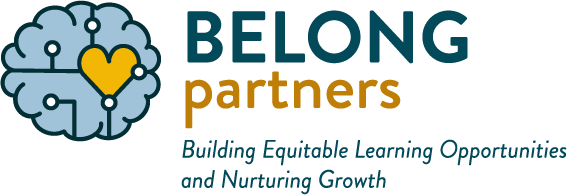
We are drawn to teaching because we want to make a difference in the lives of children. With the creation of new technologies and innovative research, the field of neurobiology has become an exciting new frontier, offering a clearer understanding of what works for the healthy development of the whole child. This understanding sheds light on what effective teaching looks like. Here are a few brain building tips to optimize your teaching efforts:
Connect, connect, connect.
Strong relationships build strong learning. When a child perceives that a relationship is mutually respectful and that there is trust, oxytocin is released. The oxytocin enhances relaxation and openness, which leads to greater learning and greater creativity. Conversely, when a child is stressed, feeling distrustful or worried about a potentially threatening relationship in class, the hormone cortisol is released. Cortisol in the brain causes a fight, flight or freeze response and disconnects a child from their prefrontal cortex, effectively cutting off their ability to learn. According to Zaretta Hammond, author of Culturally Responsive Teaching & the Brain, cortisol halts learning for about 20 minutes but can stay in the body for up to three hours.
Build Community
Create daily ritual and routine that allows you to connect with individuals in your class and connects them to one another. Regular class meetings provide an opportunity for students to build relationships, solve problems and have voice in their community. Your safe, connected environment may take effort to build, but the payoff in learning and well-being will be worth it! Check out Positive Discipline in the Classroom for more information on class meetings and other community building ideas.
Take Care of Yourself: YOU are your most important teaching tool.
With the work of Dr Marco Iacoboni and others, we now know that we are hardwired to mimic what we see though a complex set of cells called mirror neurons. Mirror neurons allow us to learn without being implicitly taught and that is powerfully important in our development as humans; in fact, when we see someone doing something with intention, our brains fire as though we are actually doing the action ourselves, thus building the neural pathways needed for that action. Dr. Dan Seigel explains that human beings also mirror other people’s emotions. When we see someone who is sad, we also feel sad. So, when we are stressed as teachers, that stress is passed on through mirror neurons to our students. Our students then reflect this back to us in a negative loop. When we prioritize self-care as teachers, we are in fact, creating a more optimal environment for learning. What is something you can do to support yourself or a colleague this week?
Common among teachers in today’s education systems is compassion fatigue and burnout. Social scientists see these as two different reactions to stress, but both are detrimental to teachers and to the students they teach. Go to http://www.compassionfatigue.org/pages/selftest.html if you would like to explore this more.
Offer Regular Brain Breaks
Mindfulness activities and self-regulation activities do not take long to do, some only seconds…but their impact on the classroom can be dramatically positive, especially over time. Check out Sound Discipline’s Self-regulation Tool Cards for ideas.
